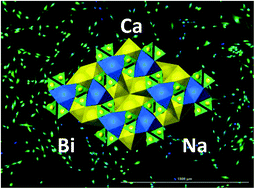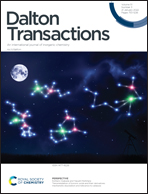Crystal-chemical and morphological interpretation of the biocompatibility of compounds in a Ca–Na–Bi–fluorapatite system
Abstract
This work is devoted to the study of the features of isomorphism in compounds of a Ca–Na–Bi–P–O–F system with a crystalline structure of the mineral apatite, as well as its effect on the biocompatibility of substances in relation to human cells in an in vitro model. A Ca10−2xBixNax(PO4)6F2 system (x = 0, 1, 2, 3, 4, and 5) is characterized by continuous isomorphism, which follows from the minimum deviations of the unit cell parameters from the Vegard and Rötgers rules. The refinement of the crystal structure showed that the cations are unevenly distributed between the 4f and 6h positions of the crystal structure of apatite: the bismuth ions are predominantly localized in the 6h position, while the sodium ions are concentrated in the 4f position. A standard MTT test of the biocompatibility of compounds with x = 1, 2, 3, and 4, and at x = 1 showed an anomaly in the form of an increased relative cell growth rate. This paper discusses the possible crystal-chemical and morphological reasons for this phenomenon.



 Please wait while we load your content...
Please wait while we load your content...